The Story Behind NJ’s $426M Walkable Town Center
The large mixed-use development in Glassboro, N.J., is in its final stage. Nexus Properties’ Dante Germano revealed the 14-year evolution of the project, its challenges and how it transformed the South Jersey community.
By Alexandra Pacurar
Rowan Boulevard’s history began in 2004, after the Borough of Glassboro, a quiet suburban town in southern New Jersey, acquired 26 acres of land ripe for redevelopment, before the mixed-use development trend caught on. The project comprised four core phases and the last one—a $75 million investment—broke ground this year. The initiative is a public-private partnership of Rowan University, the Borough of Glassboro and Nexus Properties, the master developer.
Multi-stage development
The first stage—worth $107 million—was completed in 2010 by former master developer SORA and brought roughly 900 student beds, as well as a two-story Barnes & Noble bookstore and a café, to downtown Glassboro. The following year, Nexus replaced SORA and kicked off the second phase of the project, which cost roughly $134 million. This included the five-story Whitney Center, which features 280 beds for the university as well as 20,000 square feet of ground-floor retail space.
One year later, Rowan Boulevard expanded again by adding a Marriott Courtyard hotel, a parking garage and the Enterprise Center—a building offering more than 50,000 square feet of classroom space dedicated to Rowan’s College of Graduate Education, along with an additional 10,000 square feet of retail space.
The second phase also welcomed the development’s first student housing project, known as 220 Rowan Blvd. The six-story building totals over 300,000 square feet and includes 57 apartments, almost 500 beds as well as 28,000 square feet of medical space and 20,000 square feet of retail space.
“Most recently, we celebrated the completion of the A3 phase in August of 2017. Totaling $110 million, and the largest phase of the project, A3 welcomed two buildings—223 High St. and 230 Victoria St.—and features a new Rowan University fitness center and a mix of student beds, market-rate apartments, 30,000 square feet of undergraduate classroom space, (a) 1,000-vehicle parking garage and 40,000 square feet of retail and office space,” Dante Germano, COO of Nexus Properties and a lifelong Glassboro resident, told Commercial Property Executive.
Rowan Boulevard’s final phase
Currently, the last phase of Rowan Boulevard is under construction. Dubbed A4, this portion will add three more mixed-use buildings. Germano discussed the complex development with CPE and weighed in on how this urban-style town center fits into a suburban area.
What can you tell us about the last phase of Rowan Boulevard? What does it include and when is it slated for completion?
Germano: The final phase of Rowan Boulevard, totaling $75 million, will include 20,000 square feet of retail space and three mixed-use buildings: 114 Victoria, 57 Main Street and Park Place North Apartments. Known as A4, this phase brings over 600 student beds and 20 apartments overlooking the town square. The final phase of the project broke ground in August 2017 and is slated for completion in 2018. Also coming to Rowan Boulevard in 2018 is a four-story theater including performance and restaurant space, as well as two floors dedicated to classroom space.
What were the challenges of such a complex development?
Germano: Proposing this type of transformative, large-scale and long-term project inherently presents varying challenges. We were tasked with balancing the needs of the borough and its residents with Rowan University’s vision for a growing campus and expanding student body. We found success by first opening the channels of communication. From the early stages of development, we have worked in close concert with each of Glassboro’s stakeholders and elected officials, partnering with them in each step of the process, from design to execution. The same approach led us to build strong relationships with leaders at Rowan University.
How does an urban-style town center fit into a suburban area?
Germano: Great suburban locations offer a lifestyle that blends comfort and access. That doesn’t change with the addition of an urban-style town center. In fact, a central hub like the one we’ve created in Glassboro can act as a magnet for the entire surrounding population, bringing people together not just to eat and drink with friends, but also to organize and attend larger cultural events. A town center can actually strengthen the fabric and identity of a suburb, not damage it.
In Glassboro, we’ve found that Rowan Boulevard has been a seamless fit. The borough has always enjoyed driveable access to restaurants, shops and education, but these never existed in a single location. It harmonizes perfectly with emerging consumer trends—emphasizing collaboration, walkability and diversity in retail choices—without compromising the privacy or freedom of the suburban lifestyle that they enjoy.
Do you think we will see more of this type of projects? Why, or why not?
Germano: The trend of creating dense, walkable town centers in otherwise suburban municipalities is here to stay. The reason is simple: they work. In addition to its undeniable appeal to consumers, a town center can also be a boon for the local economy. Many suburban towns are faced with declining tax bases and withering commerce as more young people and companies flock to cities. Still, there will always be a significant segment of the population that seek out the suburbs to work, retire or raise a family. A small pocket of urban, yet locally inspired development captures this population and becomes a breeding ground for new business and, in turn, ratables.
What can you tell us about financing such a large investment? What were the main sources of capital?
Germano: Financing a project of this scope required both resiliency and a little creativity. During the initial phases, our main sources of capital stemmed from a bank construction loan, developer equity loan and a bridge loan, which were collateralized by New Jersey tax credits. Once the initial phases of construction were complete, we took out the construction loan with a permanent loan from a life insurance company. We then converted the original bridge loan to a 10-year bank loan collateralized by tax credits.
Was it challenging to put together the capital stack?
Germano: At the time, putting together the capital stack was certainly a challenge, as the tax credits were still new and payable over a 10-year period. We spent a lot of time in negotiations with banks, but were ultimately able to finance the credits we needed to continue to move the redevelopment initiative forward.
What are the challenges of a public-private partnership? What was the contribution of your public partner?
Germano: We were tasked with harnessing the needs of both Rowan (University), as one of the fastest-growing schools in the nation, and the Borough of Glassboro, as a historic, burgeoning town nestled in a suburban setting. Every decision relating to the project was directly tied to meeting partner expectations while keeping our interests aligned.
An added challenge, as aforementioned, was the overall financing for the project. A redevelopment proposal the size of Rowan Boulevard required a significant capital stack, and with no public entity able to make a cash contribution, we were faced with finding viable solutions to successfully finance the project. Thankfully, our efforts were boosted with the borough issuing a PILOT and Rowan University agreeing to lease classroom and fitness space, providing short-term occupancy guarantees.
How do you see the evolution and growth of Rowan Boulevard going forward?
Germano: Looking ahead we plan to bring even more retail space to Rowan Boulevard, fostering opportunities that will make downtown Glassboro a true year-round regional destination. We’d like to build upon our success in attracting nearby residents to community events on Rowan Boulevard’s new town square. The beautifully landscaped open space offers an ideal setting for community events, musical concerts, local fundraisers, craft fairs, pop-up events, university initiatives and so much more.
Our plans also include bringing a 122,000-square-foot theater building to the Glassboro area—something that will be completely unique for the region and capable of drawing new visitors from throughout South Jersey. It will also provide a new dimension to the entertainment scene for the local community. We foresee the theater becoming a landmark for Glassboro and another attractive destination for the community.
Images courtesy of Blackney Hayes Architects and TeresArt Photography

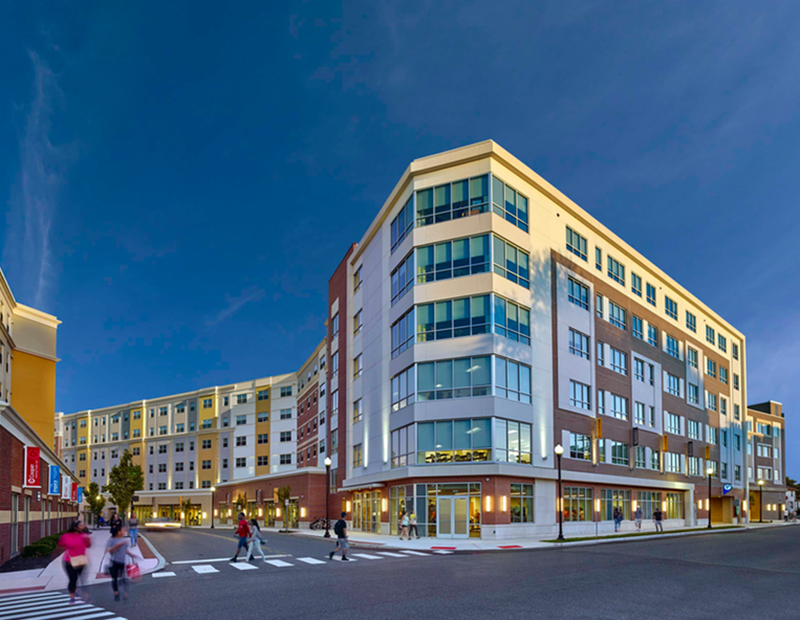
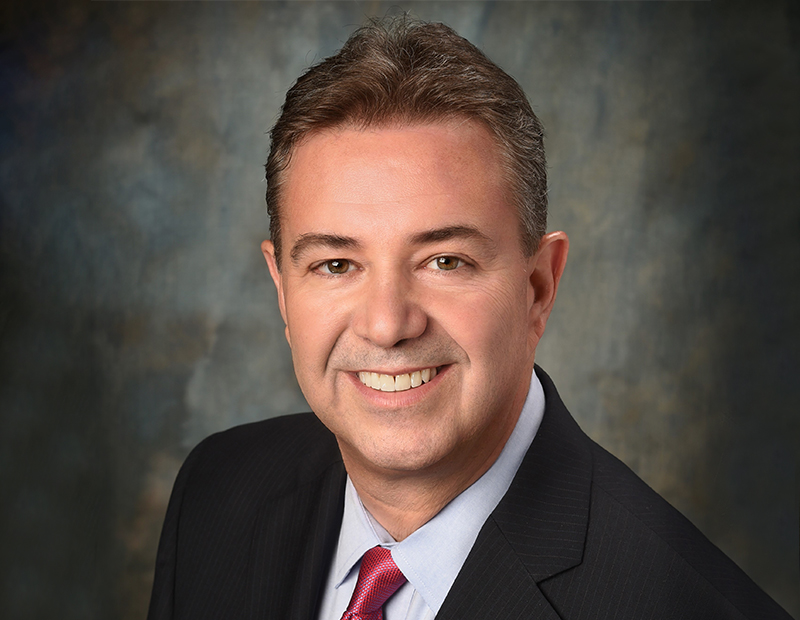

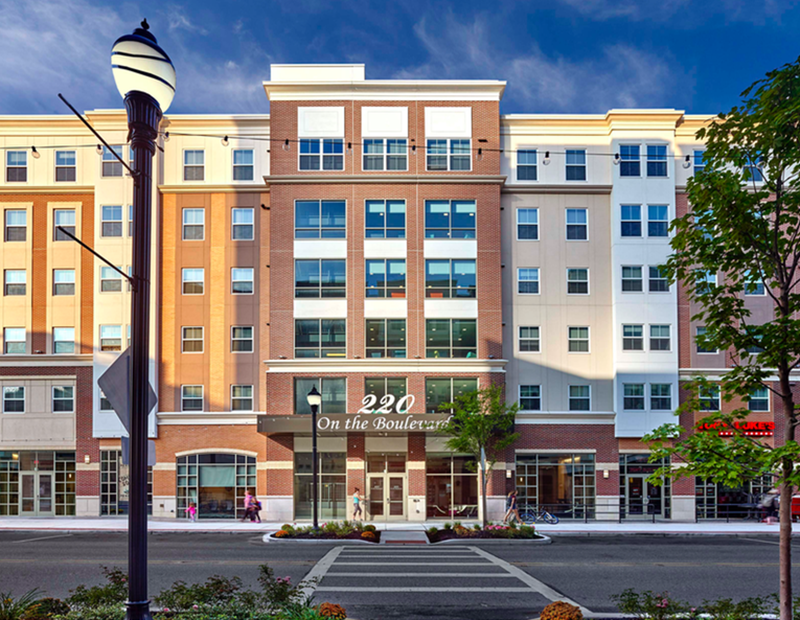
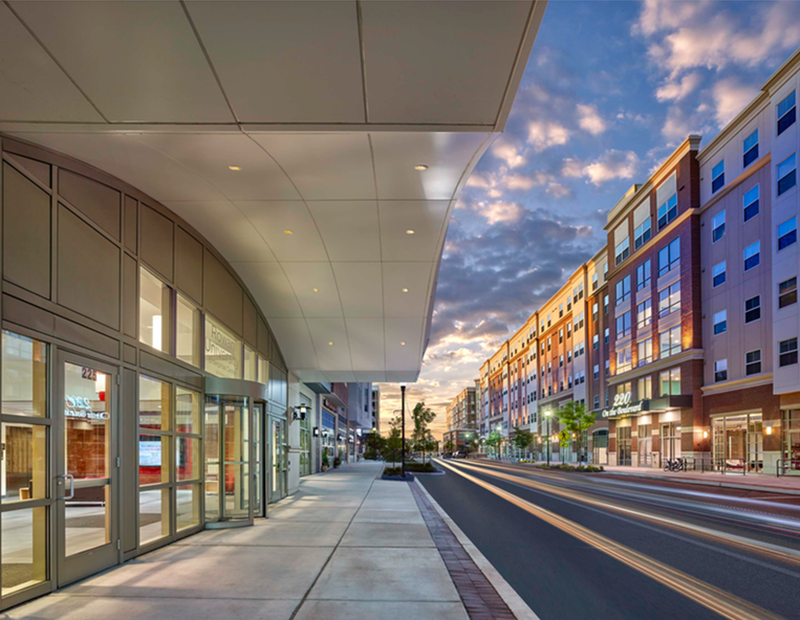
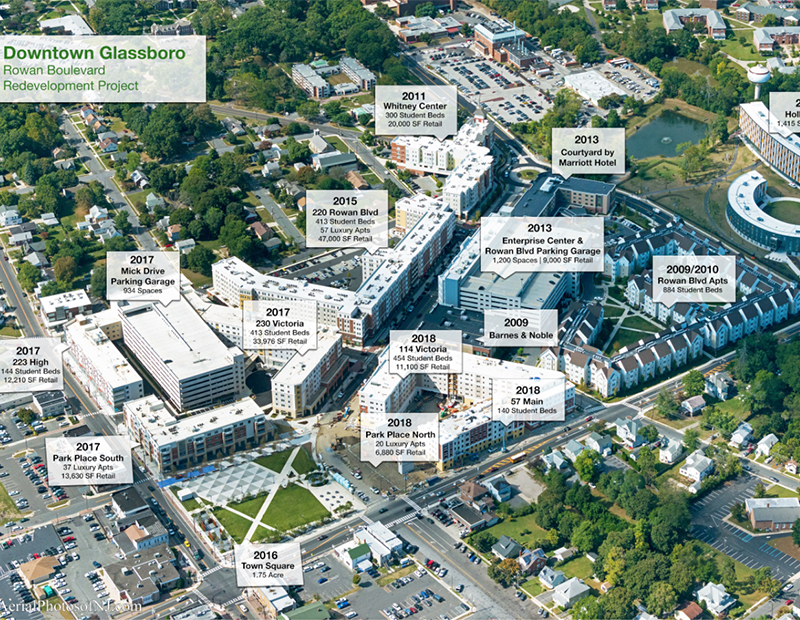






You must be logged in to post a comment.